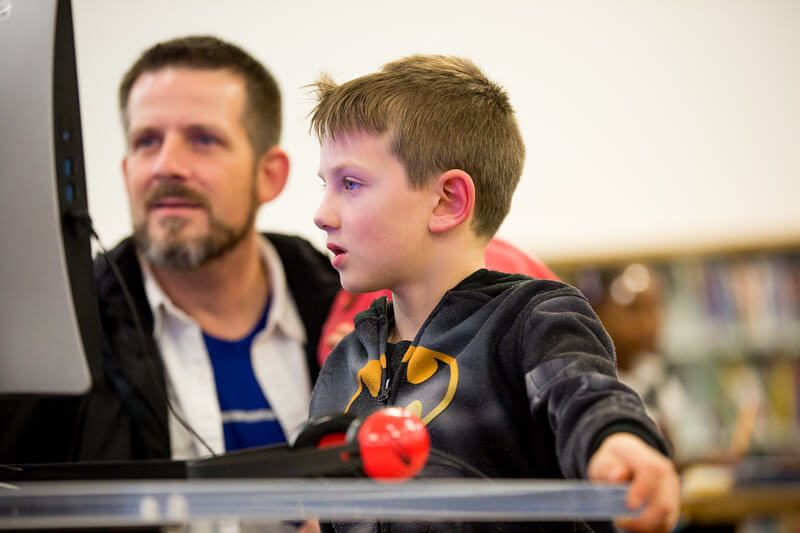There is so much information out there, and sometimes it’s not clear if the source is trustworthy and unbiased. This can be confusing for kids, too. Helping them to understand and evaluate what they see and hear will get them on the right track for the future. It will also help them with school assignments where they may have to do research.
These tips apply to people of all ages, of course, but even preschoolers can begin to understand some of the concepts. Common Sense Media has some great resources on this topic to help you talk to your kids about it.
Fact or fiction?
Talk to your child about the difference between truth and fiction. Which books or shows are made up and which are not? You can talk about this as you read or watch together. Common Sense Media suggests asking questions like “Who is telling the story?”
With older children, you can go more in-depth in your examination, using books like Breaking the News: What’s Real, What’s Not, and Why the Difference Matters by Robin Terry Brown.
Commercials and ads
It’s not always easy to tell at a glance what’s an ad and what’s not. This is especially true for younger kids. They may see favorite characters in a commercial for yogurt, for example. How do they know this isn’t just more entertainment? You can help them by talking about what a commercial is trying to tell them. Look for clues together, such as product logos.
Older kids may see ads or paid content when they are looking for information online. You can help by pointing out that some results of their web search are labeled “advertisement” or “sponsored.”
Questions to ask
As kids grow, they will spend more time reading and viewing media on their own. Here are some questions you can ask (or they can ask themselves) to help identify bias or false information.
“Who wrote or created this?” Clues to look for include the name of the author, the name of the website or publication, and logos. Try searching for the author’s name and see if you can find anything else they published.
“Where did this information come from?” Look for a list of sources or a bibliography, names and credentials of people who are quoted, links to outside sources, etc.
“Where can I find more about this?” Is there another video, book or article about this topic? Do they say the same thing? It’s always good to get multiple viewpoints.
“How does this make me feel?” Does it seem like the intent is to make you angry or sad? That could be a sign of manipulation. Is it trying to be funny? Sometimes jokes can be confused for truth.
“What does the author or creator want?” Are they trying to convince you to take an action or believe a certain thing? Look for resources that state the facts and look at all sides of a topic, not just one side.
The Library can help!
You can always ask your library staff to help you find information, but you don’t even have to walk into a library to get useful insights. With your library card, you can access databases that include news articles, encyclopedia entries and more. Library staff have identified these are trustworthy resources.
You can also contact us by phone or online for assistance.
You can sign up for a free library card here. If you are new to our eResources, check out these tutorial videos on how to get started. If you have any additional questions, you can contact a librarian through Facebook, Instagram or Twitter. You can also call us at 412.622.3114 or email us at info@carnegielibrary.org.
Looking for something to read, watch or listen to? Browse our Staff Picks.
Staff Picks

